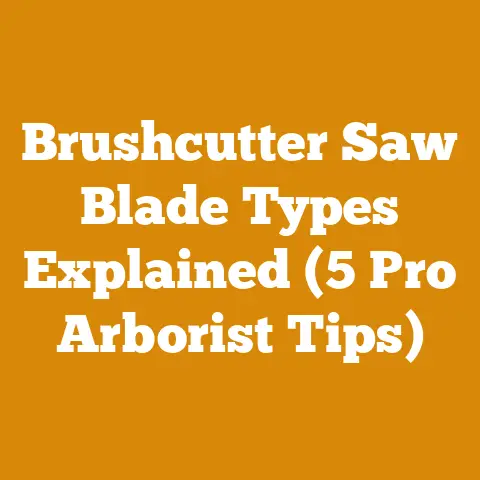How to Identify Box Elder Wood for Firewood (Expert Guide)
How to Identify Box Elder Wood for Firewood (Expert Guide)
Let’s be honest, heating your home with wood can be a real budget-saver. With natural gas prices fluctuating more than a politician’s promises, and electricity bills that seem to climb higher every winter, the allure of a crackling fire and the warmth it brings is stronger than ever. According to the U.S. Energy Information Administration, heating accounts for over 40% of the average household’s energy consumption, so finding cost-effective solutions is paramount. That’s where firewood comes in, and knowing your wood makes all the difference.
I’ve spent years felling trees, splitting logs, and stacking firewood, and I can tell you firsthand that not all wood is created equal. Some species burn hot and long, while others fizzle out faster than a cheap firecracker. And that’s where Box Elder comes into the picture.
Why Identifying Box Elder Matters for Firewood
Before we dive into the nitty-gritty of identification, let’s understand why it’s important. Knowing the type of wood you’re burning directly impacts:
- Heat Output: Different woods have different BTU (British Thermal Unit) ratings, which measure the amount of heat they produce.
- Burn Time: Some woods burn slowly and steadily, providing long-lasting heat, while others burn quickly.
- Smoke Production: Certain woods produce more smoke than others, which can be problematic for indoor fireplaces and stoves.
- Creosote Buildup: Creosote is a flammable byproduct of wood combustion that can accumulate in your chimney, increasing the risk of a chimney fire. Different woods contribute to creosote buildup at varying rates.
- Overall Efficiency: Choosing the right wood can significantly improve the efficiency of your wood-burning appliance and reduce your overall heating costs.
According to a study by the Biomass Energy Resource Center (BERC), using seasoned hardwood instead of green softwood can increase heating efficiency by as much as 30%. Knowing what you’re burning is crucial for maximizing efficiency and safety.
Identifying Box Elder: A Step-by-Step Guide
Okay, let’s get to the heart of the matter: how to identify Box Elder. This is where my years of experience come in handy. I’ve learned to spot Box Elder from a distance, but for those just starting out, it’s all about the details.
1. The Leaves: Your First Clue
Box Elder, Acer negundo, is a type of maple, but its leaves are quite different from the classic maple leaf we all know and love. This is often the easiest way to identify it, especially during the growing season.
- Compound Leaves: Unlike other maples with simple, lobed leaves, Box Elder has compound leaves, meaning each leaf is made up of multiple leaflets. Typically, there are 3-9 leaflets per leaf, but 5 is the most common.
- Leaflet Shape: The leaflets are oval or lance-shaped, with coarsely toothed edges. They are generally 2-4 inches long.
- Color: The leaves are typically a medium green color, turning yellow in the fall.
- Arrangement: The leaves are arranged oppositely on the branches, meaning they grow in pairs on either side of the stem.
Pro Tip: Don’t confuse Box Elder with Ash trees, which also have compound leaves. Ash leaves usually have more leaflets (5-11) and are more finely toothed.
2. The Bark: A Closer Look
The bark of Box Elder can vary depending on the age of the tree.
- Young Trees: Young Box Elder trees have smooth, gray-brown bark with shallow fissures.
- Mature Trees: As the tree matures, the bark becomes more deeply furrowed and ridged, with a more rugged appearance. The bark can also develop a slightly corky texture.
- Color: The bark is typically gray-brown, but it can sometimes have a reddish or yellowish tinge.
My Experience: I once mistook a mature Box Elder for a type of oak because of its furrowed bark. It wasn’t until I examined the leaves more closely that I realized my mistake. It’s a good reminder to always consider multiple characteristics when identifying trees.
3. The Branches and Twigs: Identifying Marks
The branches and twigs of Box Elder have some distinctive features.
- Color: The twigs are typically green or purplish-green when young, turning gray-brown as they mature.
- Buds: The buds are small, pointed, and covered in reddish-brown scales. They are arranged oppositely on the twigs.
- Branching Pattern: Box Elder has an irregular branching pattern, with branches often growing at odd angles. This can give the tree a somewhat unkempt appearance.
4. The Wood: Distinguishing Features
Identifying Box Elder wood after it’s been cut can be a bit more challenging, but there are still some clues to look for.
- Color: The heartwood (the inner core of the tree) is typically a creamy white or light brown color. The sapwood (the outer layer) is usually lighter in color.
- Grain: Box Elder wood has a relatively straight grain, but it can sometimes be slightly interlocked.
- Texture: The wood has a medium texture, neither particularly coarse nor particularly fine.
- Weight: Box Elder is a relatively lightweight wood compared to other hardwoods like oak or maple.
- Odor: Freshly cut Box Elder wood can have a slightly unpleasant odor, sometimes described as a “cat urine” smell. This odor usually dissipates as the wood dries.
Case Study: A local woodworker I know uses Box Elder for small craft projects because of its light color and ease of carving. He says the smell is a small price to pay for the wood’s workability.
5. The Flowers and Seeds: Seasonal Clues
If you’re identifying Box Elder during the spring or fall, the flowers and seeds can provide additional clues.
- Flowers: Box Elder trees are dioecious, meaning they have separate male and female trees. The flowers are small, greenish-yellow, and appear in drooping clusters in the spring.
- Seeds: The seeds are samaras, winged fruits that are characteristic of maples. They are typically V-shaped and hang in clusters from the branches. They mature in the fall and are dispersed by the wind.
Box Elder as Firewood: The Good, the Bad, and the Ugly
Now that you can confidently identify Box Elder, let’s talk about its suitability as firewood. It’s not the best, but it’s far from the worst.
The Good:
- Easy to Split: Box Elder is relatively easy to split, especially when it’s green. This can save you time and energy when preparing your firewood.
- Dries Quickly: Box Elder dries faster than many other hardwoods, meaning you can season it more quickly and burn it sooner.
- Readily Available: In many areas, Box Elder is a common tree, making it a readily available source of firewood.
- Decent Heat Output: While not as high as some other hardwoods, Box Elder still provides a decent amount of heat, especially when seasoned properly.
The Bad:
- Lower BTU Rating: Box Elder has a lower BTU rating than many other hardwoods, meaning it doesn’t produce as much heat per unit of volume.
- Burns Quickly: Box Elder burns relatively quickly, meaning you’ll need to replenish your fire more often.
- Can Be Smoky: If not properly seasoned, Box Elder can produce more smoke than other hardwoods.
- Prone to Rot: Box Elder is prone to rot, especially if it’s left on the ground or exposed to moisture.
The Ugly:
- Attracts Bugs: Box Elder trees are often infested with Box Elder bugs, which can be a nuisance around your home. While the bugs aren’t harmful, they can be annoying.
- Weak Wood: Box Elder wood is relatively weak and prone to breakage. This can make it less desirable for certain applications.
Data Point: According to the Firewood BTU Chart, Box Elder has a BTU rating of around 15 million BTU per cord, compared to oak, which has a BTU rating of around 20-30 million BTU per cord. This means you’ll need to burn more Box Elder to get the same amount of heat as oak.
Maximizing Box Elder for Firewood: Tips and Tricks
Okay, so Box Elder isn’t the perfect firewood, but it can still be a valuable resource if you know how to use it properly. Here are some tips and tricks for maximizing its potential:
- Seasoning is Key: This is the most important factor. Always season Box Elder for at least 6-12 months before burning it. This will reduce its moisture content, improve its heat output, and minimize smoke production. Aim for a moisture content of 20% or less.
- Stack it Properly: Stack your Box Elder firewood in a well-ventilated area, off the ground, and covered on top to protect it from rain and snow. This will help it dry more quickly and prevent rot.
- Mix it with Other Woods: If possible, mix Box Elder with other, higher-BTU woods like oak or maple. This will help you get a longer-lasting and more efficient fire.
- Use it for Shoulder Season: Box Elder is a good choice for burning during the shoulder seasons (spring and fall) when you don’t need as much heat.
- Consider a Wood Stove: Wood stoves are more efficient than open fireplaces, so you’ll get more heat from your Box Elder firewood.
- Monitor Your Chimney: Because Box Elder can be smoky if not properly seasoned, it’s important to monitor your chimney for creosote buildup. Clean your chimney regularly to prevent chimney fires.
Personal Story: I remember one winter when I was short on firewood. I had a large pile of Box Elder that I had seasoned for about a year. I mixed it with some oak that I had left over from the previous year, and it actually worked out quite well. The Box Elder burned quickly, but it provided a good initial burst of heat, and the oak kept the fire going for longer.
Tools of the Trade: Chainsaws, Axes, and More
No discussion about firewood is complete without mentioning the tools you’ll need. Here’s a quick rundown of some essential tools:
- Chainsaw: A chainsaw is essential for felling trees and cutting logs into manageable lengths. Choose a chainsaw that is appropriate for the size of the trees you’ll be cutting. I prefer a gas-powered chainsaw for its power and portability, but electric chainsaws are also a good option for smaller jobs.
- Axe: An axe is essential for splitting logs. Choose an axe that is comfortable to swing and has a good balance. A splitting maul is a heavier axe that is designed specifically for splitting logs.
- Wedges: Wedges can be used to help split particularly tough logs.
- Sledgehammer: A sledgehammer can be used to drive wedges into logs.
- Measuring Tape: A measuring tape is essential for cutting logs to the correct length for your fireplace or wood stove. I aim for around 16 inches to make it easy to handle and stack.
- Moisture Meter: A moisture meter is a valuable tool for measuring the moisture content of your firewood. This will help you determine when your firewood is properly seasoned.
- Safety Gear: Always wear appropriate safety gear when working with firewood, including safety glasses, gloves, hearing protection, and steel-toed boots.
Tool Selection Insight: I’ve found that investing in quality tools pays off in the long run. A well-maintained chainsaw and a sharp axe will make your firewood preparation much easier and safer.
Costs and Budgeting: Keeping it Affordable
One of the main reasons people choose to heat with wood is to save money. Here’s a breakdown of the costs associated with preparing your own firewood:
- Equipment Costs: Chainsaw, axe, wedges, sledgehammer, measuring tape, moisture meter, safety gear.
- Fuel and Maintenance Costs: Gasoline for the chainsaw, chain oil, sharpening files, replacement parts.
- Transportation Costs: Truck or trailer for hauling logs.
- Time Costs: The time you spend felling trees, splitting logs, and stacking firewood.
Budgeting Tip: Consider purchasing used equipment to save money. You can often find good deals on used chainsaws and axes at garage sales or online marketplaces.
Resource Management: If you have access to free or low-cost wood, such as fallen trees on your property or firewood permits from local authorities, you can significantly reduce your firewood costs.
Troubleshooting: Common Pitfalls and How to Avoid Them
Even with the best planning, things can sometimes go wrong when preparing firewood. Here are some common pitfalls and how to avoid them:
- Dull Chainsaw: A dull chainsaw is dangerous and inefficient. Sharpen your chainsaw regularly or take it to a professional for sharpening.
- Stuck Axe: If your axe gets stuck in a log, don’t try to force it out. Use a wedge and sledgehammer to split the log apart.
- Wet Firewood: Wet firewood is difficult to light and produces a lot of smoke. Make sure your firewood is properly seasoned before burning it.
- Chimney Fires: Chimney fires are dangerous and can cause significant damage. Clean your chimney regularly to prevent chimney fires.
My Biggest Mistake: I once tried to split a large, knotty log with a dull axe. The axe got stuck, and I ended up straining my back trying to get it out. I learned my lesson: always use sharp tools and don’t try to force things.
Next Steps and Additional Resources
Now that you’re armed with the knowledge to identify Box Elder and use it effectively for firewood, here are some next steps you can take:
- Practice Identifying Box Elder: Go for a walk in your local area and try to identify Box Elder trees.
- Gather Firewood: If you have access to Box Elder trees, start gathering firewood.
- Season Your Firewood: Stack your firewood properly and allow it to season for at least 6-12 months.
- Invest in Quality Tools: Purchase the tools you need to prepare firewood safely and efficiently.
- Clean Your Chimney: Clean your chimney regularly to prevent chimney fires.
Additional Resources:
- Local Firewood Suppliers: Contact local firewood suppliers for information on firewood prices and availability.
- Local Arborists: Contact local arborists for information on tree removal and firewood permits.
- Online Forums: Join online forums dedicated to firewood and wood-burning for tips and advice from experienced users.
- University Extension Services: Contact your local university extension service for information on tree identification and firewood management.
Suppliers of Logging Tools:
- Husqvarna: A well-known brand for chainsaws and other forestry equipment.
- Stihl: Another reputable brand for chainsaws and outdoor power equipment.
- Fiskars: A popular brand for axes, mauls, and other hand tools.
- Northern Tool + Equipment: A retailer that sells a wide variety of logging tools and equipment.
Drying Equipment Rental Services:
- While specialized firewood drying equipment isn’t commonly rented, consider renting a dehumidifier for enclosed storage spaces to accelerate the drying process. Local tool rental companies may offer suitable options.
Conclusion: Embracing Box Elder as Part of Your Firewood Strategy
Box Elder may not be the star of the firewood show, but it’s a valuable supporting player. By understanding its properties, knowing how to identify it, and using it properly, you can make the most of this readily available resource and save money on your heating bills. Remember, safety and proper seasoning are key. So, get out there, gather your wood, and enjoy the warmth and comfort of a crackling fire! And remember, every seasoned firewood enthusiast started somewhere – embrace the journey, learn from your experiences, and you’ll be stacking and burning like a pro in no time!





